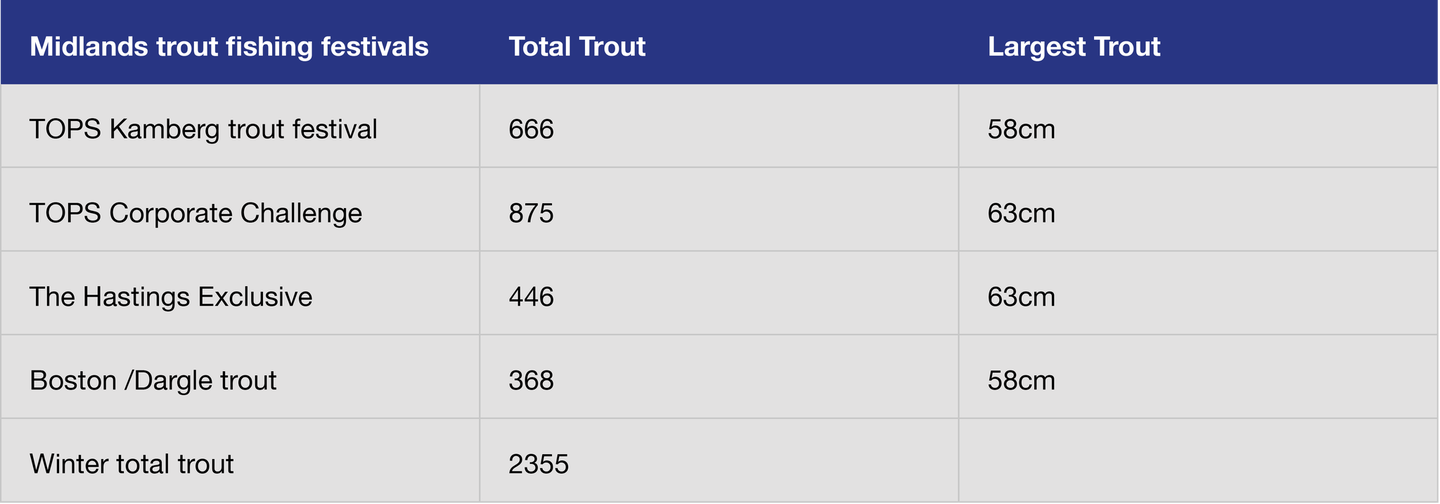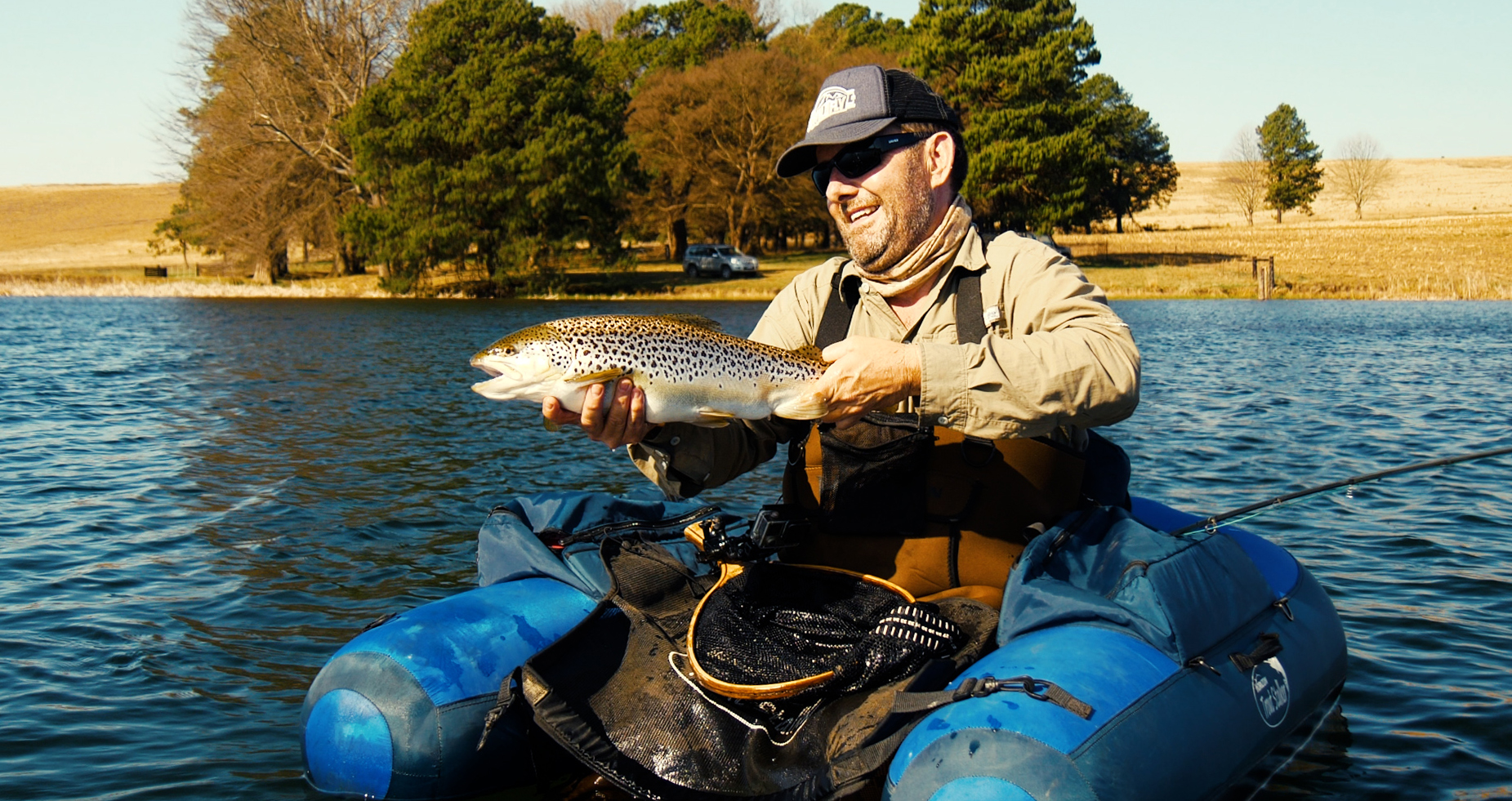CHEERS | FISHING

In a sort of State of the Trout Nation Gareth George sums up his impressions of the KwaZulu-Natal scene, examining the criteria for success.
The slow season

It’s undisputed that the KZN midlands has cold winters. Every year. But some years the winter seems to linger a little longer – and 2022 was one of those where the sustained sub-zero temperatures translated in the fish stubbornly clinging on to their unco-operative spawning behaviour when they’d normally be more active.
Those fishermen who didn’t adopt the Survivor mantra of Outwit, Outplay and Outlast struggled to land any fish.
But the more savvy anglers who chose to selectively cast, turning to micro patterns for the trout to nose at, reported their fair share of encounters with exceptionally large fish.
Personally, I believe fishing festivals are a wonderful yardstick against which waters are measured, giving every dam a snapshot of yield from intense rod pressure.
The TOPS at SPAR festivals usually kickstart this still water season and with six main events on the angler’s calendar, there’s no shortage of trout in the KZN midlands, as the below chart clearly demonstrates.

Catch records such as these are such an important component of fishery management as they reflect stocking levels. It’s the closest thing that you can get to a stock count. You’ll always have anecdotal feedback from friends on trout waters, but at best this will be a picture and their personal experience. Fishery management is governed by hard data and fortunately, all the events allow us to acquire this.
Every dam is different, but fly fishers often ask what is it that makes any dam fish consistently well. I believe it revolves around five factors.
The first and most obvious is water quality. Each body of water is unique in terms of nutrient levels, and the chemical composition is relative to insect life and trout that it can support. To get a little technical, pH and dissolved oxygen are the critical factors, with the water’s nutrient levels having a notable impact on weed growth and stability of the ecosystem. This dictates the kilograms of trout the water can naturally carry: carrying capacity. Clean cool waters that flow from a spring or mountain catchment will always provide a more stable environment for trout.

Bird’s eye view of an angler in the shallows, trying to tempt a trout to take the fly
The second factor is stocking, and should be carried out according to a water’s carrying capacity. WildFly’s stocking policy revolves around a combination of stockies – or one year old fish in the 350g category, and a few fin perfect cock fish pre-event to stir the larger feral hens up. The majority of biomass is on 3 to 6 inch fish, to try and emulate a natural environment and produce almost wild trout, which provide better sport.
Factor number three is temperature and water level. They’re linked and this past year, the dam levels have been the highest in the past decade. The winter of 2022 also produced the coldest continual water temperatures for some time – which is wonderful for fish survival but not necessarily good for fishing itself! Simply put, full dams equate to stable water conditions and any major change or fluctuation in level impacts the habitat, and thus the fish survival rate.
Weather is the fourth element. There are many apocryphal tales about the impact of moon phases and prevailing wind directions but one thing I know, is that an atmospheric pressure change – particularly low pressure – gives fish lockjaw! And wind is indicative of a pressure movement. It’s also true that most fishermen are fair weather casters … because fly casting in wind is a predictably miserable affair. So, the hours and effort any angler puts in on water will be dictated by how inclement the conditions are.
The final factor is perhaps the most obvious: ability and rod pressure. A fly fisher will always look for reasons why they didn’t land a catch, rarely attributing their own (lack of) prowess as a reason. But time and again, if you put an experienced or knowledgeable fly fisher on any piece of water they’ll prevail. It’s no coincidence that these individuals always seem to catch the bigger, smarter fish. So who is fishing the dam will dictate what it produces. The other indisputable fact is that the more people that fish a body of water, the less it’ll produce. Trout become fly shy with any sustained rod pressure, regardless of whether catch and release is practiced or not.
As summer rolls on, it’s also a good strategy to close trout dams to fishing – or run the risk of losing quality fish. Big fish are almost impossible to replace, unless you want dumb pellet-fed specimens floating around. The sad truth is that in our hot months of December, January and February, most of the fish caught will not survive due to the low oxygen levels in the warm water – especially after any prolonged fight. They don’t float as is commonly believed, but rather keel over and sink, so mortalities are almost impossible to quantify.
But the good news is that Yellow fish season is in full swing, so any angler worth their salt should focus their energy on these incredible warm water prize fighters.


